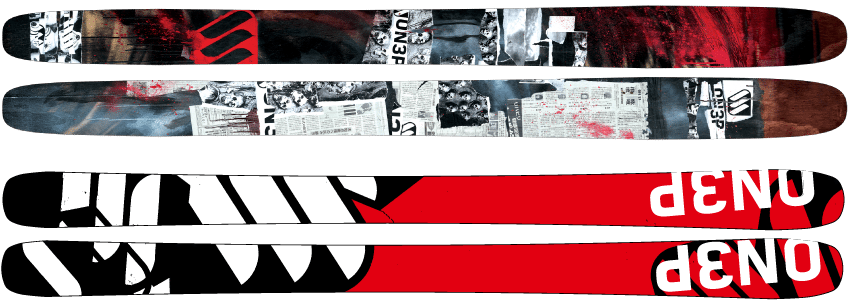12) BLISTER: “Iggyskier,” your handle on TGR and Newschoolers, hints at the answer, but what manufacturers were big influences on you, if any? Who did you look at and think, I want to get into this game; or were you motivated more by the idea that you simply wanted to build your own skis?
Scott: I wish I could go back to 2006 and remember exactly how this whole thing actually got started. I remember some of it, but I don’t remember the exact moment when the decision was made to try to start building skis.
What I do know is that my motivation came from the disappointment that resulted from the performance of an expensive, long awaited pair of custom skis that just weren’t what I had hoped for. But at that time, it was entirely hobby-oriented. I had no serious intention of trying to create a business out of it.
As for manufacturers who influenced me, the biggest is probably Igneous out of Jackson. My favorite skis before I started building my own were all Igneous, and they embodied the build quality, performance, and durability that I strived to achieve at ON3P. Those guys are very talented ski builders.

My introduction to bamboo was on a pair of Kingswood out of New Zealand, and that experience was the reason I focused on bamboo for our ski models. To me, it is an amazing material that creates a totally unique ride—responsive and poppy, but damp and stable. I don’t want to ski on anything else.
I’ve always been really impressed with what Moment has been able to accomplish in such a short time, and I have always respected the hard work and development of most of the other indie companies out there, especially the ones who are doing the actually building themselves. I don’t think most people know how much time and effort really goes into building skis, but it requires a substantial amount of time. I have the upmost respect for the companies who develop and carry out their own production process. I know how hard it is to run a business while spending countless hours down in the factory building skis, so I give a lot of props to the guys out there crafting their own unique products.
13) BLISTER: So what is your favorite, all time non-ON3P ski, and why? (If you can’t answer with just one, I’ll give you two.)
Scott: It has to be a 190cm Igneous FFF 240 RA (add 40cm tip rocker & 15 cm tail rocker—which wasn’t available back when I was skiing it) and an OG, 179cm K2 Seth Pistol, mounted -3cm from dead center.
The Igneous was the best powder ski I’d used before our Great Scott (now Cease & Desist) and was surprisingly good on hardpack and in chop. And the Seth Pistol was just a great, soft ski for messing around on all over the mountain.

14) BLISTER: What is the advantage of entering the game new? No expectations? No lineage to worry about or parent companies to appease?
Scott: The biggest advantages were the ability to create our own name and the freedom to design our skis however we wanted. We were able to come out of the first year and make clear that our focus was to build high quality, durable, freeride skis with the best materials we can find. We didn’t have to worry about another company building the skis to the specs and quality we wanted, we were able to set that standard and build to it ourselves. And each year, we’ve improved our quality and raised the standard.
We also don’t have a parent company or overbearing shareholders (though those things do come with real advantages, namely, a real budget…) who are trying to control and direct what we do, so we have the freedom to build skis we actually want to ski on, without having to justify it to anyone. Since we are building for ourselves as much as anyone else, it makes the design process a lot of fun
15) BLISTER: Biggest one or two mistakes you’ve made as the owner of ON3P?
Scott: Asking too much of my employees and myself, and not being as stringent as I could be financially. Both of those have proved to be expensive mistakes to deal with, from both a financial and sanity-based standpoint, but they were good mistakes to make in that I’ve learned a lot from both of them.
16) BLISTER: When you say that you weren’t as “financially stringent” as you should have been, which was an expensive mistake, would you mind elaborating?
Scott: Materials are the easiest and most obvious one. It took me a few ordering cycles to really get a good understanding of how I need to be ordering materials, and I am definitely still learning. But early on, we definitely over-ordered, and ended up having to scrap large amounts of material, which resulted in a pretty big financial hit.
We’ve also bought tools we thought were going to improve our process, only to find that the simpler, cheaper method we had in place was better in some way. It has all been a learning experience. It can just prove to be a very expensive, very costly learning experience when you are operating on a very small budget.
